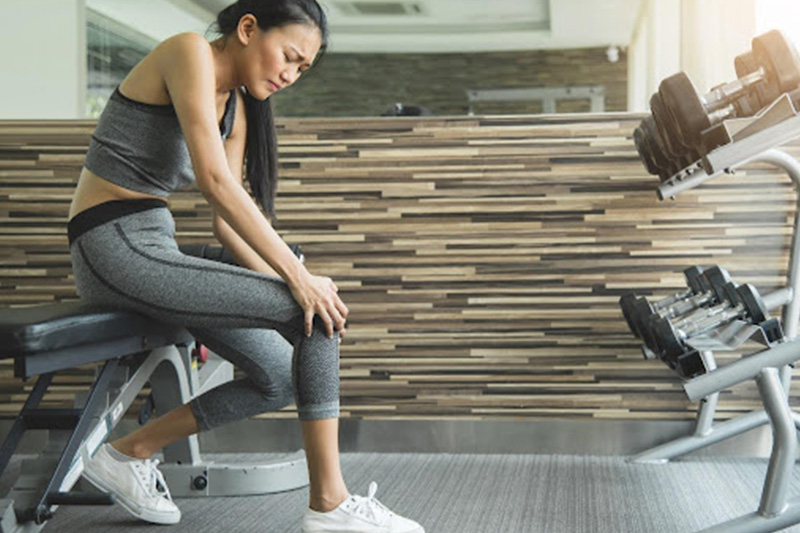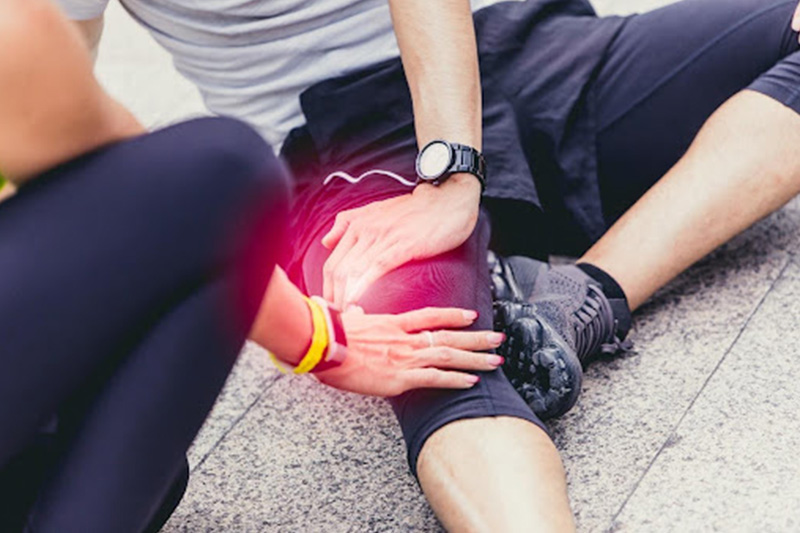CONDITIONS
Knee Pain
Overview
Knee pain refers to discomfort or inflammation in and around the knee joint. This complex joint connects the thigh bone (femur) to the shin bone (tibia) and plays a crucial role in supporting body weight, absorbing shock, and facilitating movement. Knee pain can range from mild to severe and may occur suddenly due to injury or develop gradually over time due to underlying conditions
At Peak Health Chiropractic, we aim find out the root cause of your knee pain as well as other underlying issues typically in your lower-back or hip region as well as your knee. We would then provide precise chiropractic treatments as we get to the root cause of the problem for these underlying structures. Aside from reliving the pain, we are committed to keep the pain from relapsing as we address other signs and symptoms along with physical therapy to help strength and stability of your overall spine

Causes of Knee pain
Overuse – Repetitive activities, such as running, jumping, or kneeling, can strain the knee joint and surrounding structures, leading to overuse injuries like tendonitis or bursitis.
Injuries – Acute knee injuries, such as ligament sprains, meniscus tears, and fractures, can cause immediate knee pain. Sports-related injuries, falls, and accidents are common culprits. – Acute knee injuries, such as ligament sprains, meniscus tears, and fractures, can cause immediate knee pain. Sports-related injuries, falls, and accidents are common culprits.
Osteoarthritis – Osteoarthritis is a degenerative joint disease characterised by the breakdown of cartilage in the knee joint. This condition commonly affects older adults but can also develop as a result of previous injuries or joint misalignment. – Osteoarthritis is a degenerative joint disease characterised by the breakdown of cartilage in the knee joint. This condition commonly affects older adults but can also develop as a result of previous injuries or joint misalignment.
Ligamentous and Muscular Imbalances – Weakness or imbalance in the muscles and ligaments that support the knee joint can increase the risk of injury and contribute to chronic knee pain.
Misalignment of the Knee Joint – Anatomical abnormalities, such as misalignment of the knee cap (patella) or leg length discrepancies, may predispose individuals to knee pain and dysfunction.
Plevic / sacrum subluxations. Commonly seen in the spine such as muscle imbalances or joints that are blocking or stuck. You may have knee pain that radiates from your lower back. Electric-like, stabbing, burning or tingling, radiates down past your knee or even into your feet and persists at rest. Radiates down your leg when you extend or twist your back is a indication of pinched nerves.
Other causes:
Bursitis: Inflammation and swelling between the top of the arm bone and the tip of the shoulder.
Dislocated kneecap: This involves the displacement of the triangular bone (patella) that covers the front of the knee.
Iliotibial band syndrome: The band runs from the hip down to the shin. If it becomes tight, it might rub against the outer portion of the thigh bone.
Foot pain: If you have foot pain, you might change the way you walk and cause altered biomechanics. This altered gait can place more stress and strains on your knee joint.

Symptoms of Knee Pain
- Pain: This can be sharp, dull, burning, or throbbing. The pain might be constant or might only occur when you move your knee in a certain way.
- Swelling: Fluid can accumulate in or around the knee joint, leading to visible swelling.
- Stiffness: A feeling that the movement of the knee is restricted.
- Redness and warmth: The skin around the knee may become red and feel warm to the touch, often indicating inflammation or infection.
- Weakness or instability: You might feel as though your knee might give out when you stand or walk.
- Popping or crunching noises: These sounds, known as crepitus, might be heard when the knee moves.
- Inability to fully straighten the knee: This can be due to pain, swelling, or mechanical blockage in the joint.
- Decreased range of motion: Difficulty bending or straightening the knee.
- Locking: The knee may get stuck in one position, usually due to a mechanical problem like a loose body in the joint.
- Visible deformity: The knee might look out of shape or misaligned, often seen after significant injuries like fractures or ligament ruptures.
- Pain that gets worse at night and interferes with sleep. Inflammation, which is your body’s reaction to pain, tends to intensify at night. This inflammation can trigger higher levels of pain.
- Catching, popping, or locking. This is a sign that the cartilage in the joint has torn or that bits of cartilage has broken off in the joint space. The cartilage may wear away completely if it is left untreated.
- Difficulty doing simple tasks. Some patients will experience difficulty putting on shoes and socks or doing other simple activities, such as bending down


